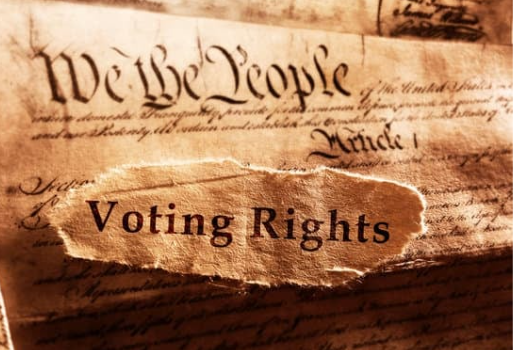Overview of Harper v. State Election Board
On a pivotal day for voting rights in the United States, the Supreme Court held oral arguments for the case Harper v. State Election Board. This case is anticipated to have far-reaching consequences for how elections are conducted in various states. With new voting laws being scrutinized, the court’s decision could redefine the relationship between state regulations and individual rights, particularly in regard to minority voter access.
Case Background
The Harper v. State Election Board case emerged after a newly enacted state law introduced several changes to voting procedures. Among these changes are stricter requirements for voter identification, a reduction in the number of early voting days, and limitations on the availability of ballot drop boxes. These new measures have ignited controversy, as critics argue they may disenfranchise certain voter populations, particularly minorities and economically disadvantaged individuals.
Arguments Presented in Court
The oral arguments showcased opposing viewpoints. On one side, the plaintiffs, represented by civil rights attorney Monica Hayes, argued that the new measures violate the longstanding Voting Rights Act of 1965. They claim that these laws disproportionately affect minority voters and undermine the principle of accessible democracy. “This case will determine whether our democracy remains accessible to all Americans,” Hayes emphasized, framing the issue as a matter of fairness and civil rights.
Defense of the State’s Position
In contrast, officials representing the state defended the enacted law as a necessary step toward ensuring election integrity. They argued that the measures are not discriminatory but rather are intended to safeguard the electoral process. The state’s representatives maintained that voter ID requirements and reduced early voting days serve to enhance security and efficiency during elections. The defense called into question the notion that the law targets specific demographics intentionally.
Key Interactions During the Hearing
During the arguments, key moments highlighted the ideological divides within the Supreme Court. Conservative justices probed into whether the provisions of the law were designed with intent to harm minority voters and challenged the plaintiffs on the burden of proof regarding discrimination. Conversely, liberal justices raised significant concerns about how the changes could suppress voter turnout and participation among vulnerable populations. This tension underscores the complex nature of voting rights as it intersects with legislative authority.
Implications of the Case
As the Supreme Court prepares to issue its ruling, likely by late June, the ripple effects of its decision could profoundly impact state election laws nationwide. A ruling in favor of the plaintiffs could empower challenges to similar laws in other states, potentially leading to broader protections for voters. Conversely, if the court sides with the state’s justification for these laws, it could embolden other jurisdictions to adopt stricter voting regulations, thus deepening the existing divide on voting issues.
National Attention and Activism
The proceedings surrounding Harper v. State Election Board have garnered significant national attention, illustrating the increasing polarization regarding voting access and election integrity. Activists, legal scholars, and political advocates from both sides closely monitor the case’s developments. The outcome is expected to resonate beyond the courtroom and influence ongoing discussions and legislation surrounding voting rights across the country.
Conclusion
The Supreme Court’s deliberation in Harper v. State Election Board is a focal point in the ongoing struggle over voting rights in the United States. As the nation grapples with differing perspectives on election integrity and accessibility, the court’s eventual ruling may guide future legislative actions and shape the democratic landscape for years to come. The implications of this case extend beyond legal boundaries, touching on fundamental principles of justice, equality, and representation in the democratic process.
FAQs
What happens if the court rules against the state?
If the Supreme Court rules against the state, it could invalidate the new voting law, potentially influencing legislation in other states and enhancing protections for voters.
What are the key changes introduced by the new law?
The law introduced stricter voter ID requirements, reduced early voting days, and limited the use of ballot drop boxes.
Why is this case important for minority voters?
The plaintiffs argue that the law disproportionately disenfranchises minority groups, which raises significant concerns regarding equal access to the electoral process.
When is the ruling expected?
The Supreme Court is expected to issue its ruling by late June 2024.
What are the potential consequences of the ruling?
The ruling could set a precedent impacting similar voting laws across the country, either reinforcing stricter measures or promoting wider accessibility in elections.

